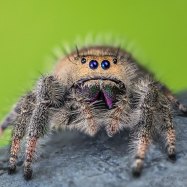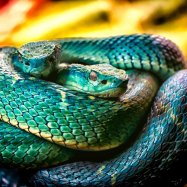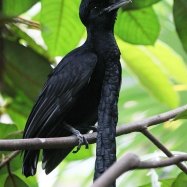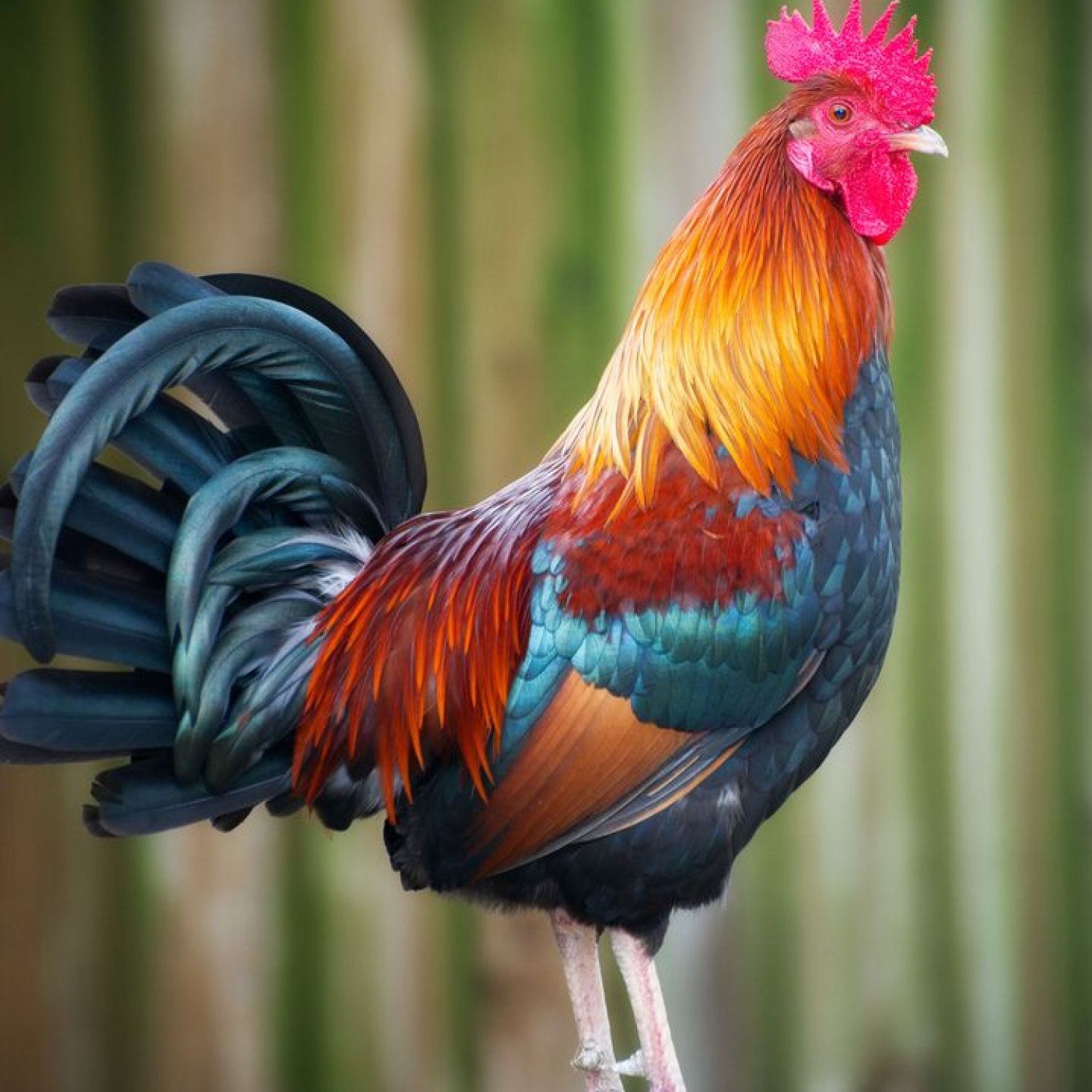
Chicken
45-60 cm (18-24 in)
Chickens are small to medium-sized birds known for their plump bodies and short wings. They belong to the Phasianidae family and are typically found on farms and backyards. These colorful and social creatures can grow up to 45-60 cm (18-24 in) in length. Keep them happy and well-fed, and they will provide you with fresh eggs every day!
Animal Details Summary:
Common Name: Chicken
Kingdom: Animalia
Habitat: Grasslands, forests, and agricultural areas
The Fascinating World of Chickens: An Ode to the Humble Bird
Chickens, also known as Gallus gallus domesticus, have been a part of human history for thousands of years. These fascinating creatures have conquered the world with their tasty eggs and succulent meat, but there is more to these birds than what meets the eye. Behind their humble appearance lies a complex and remarkable animal that has captured the hearts of people worldwide.As I set out to explore the world of chickens, I was filled with curiosity and excitement Chicken. I wanted to uncover the secrets of this animal, beyond their usual role as a food source for humans. And what I discovered was a creature that is not just an expert forager and provider of delicious meals, but also an important player in the ecosystem.
The Evolution and History of Chickens
The chicken's story is one of evolution and domestication. While the exact origins of chickens are still debated, it is believed that they originated from the wild red junglefowl in South Asia, specifically in the Indus Valley region. These birds were later domesticated for their meat and eggs, and with the spread of human civilization and agriculture, their range expanded to other parts of the world.Chickens have also played a significant role in human history, dating back to the ancient civilizations of the Egyptians, Phoenicians, Romans, and Greeks. They were not only used for food but also played a role in religious ceremonies and as a symbol of fertility and prosperity.
The Anatomy of a Chicken
Chickens, like all birds, belong to the Kingdom Animalia and Phylum Chordata. They fall under the class Aves, the order Galliformes, and the family Phasianidae Cane Spider. While they may come in various sizes, shapes, and colors, all chickens have similar anatomical features.Chickens are small to medium-sized birds, typically measuring around 45-60 cm (18-24 in) in length and weighing between 1-4 kg (2.2-8.8 lbs). They have a plump body, short wings, and a small head with a short, stubby beak. Their feet and legs are equipped with sharp claws and are perfect for scratching and foraging on the ground.
Their most distinctive feature, however, is their magnificent plumage. Chickens come in a range of colors, from vibrant shades of red, brown, and black to white and every shade in between. Their feathers are not only for aesthetic purposes but also serve as insulation, waterproofing, and display during mating rituals.
The Fascinating Adaptations of Chickens
While chickens may seem like simple birds, they have a few unique adaptations that contribute to their survival in the wild and their role as domesticated animals.For starters, their beaks are designed for foraging and pecking at the ground for food. They have a variety of specialized receptors in their beaks that can sense different types of food, such as insects and seeds, to ensure a balanced and nutritious diet.
Chickens also have the ability to see a wide range of colors due to their light-sensitive cones in their eyes. This adaptation allows them to spot ripe fruits and colorful insects that may be hidden from other animals.
In addition, chickens have a unique way of communication that includes a range of vocalizations, head movements, and displays of their feathers. They use these techniques to establish dominance, communicate danger, and show affection towards other members of their flock.
One of the most interesting adaptations of chickens is their ability to lay eggs. Their reproductive system is different from most animals, as they have a single hole called a cloaca, through which both eggs and bodily wastes are expelled. This means that chickens do not have separate genitals for reproduction, making their anatomy even more unique.
The Versatile Diet of Chickens
Chickens are omnivorous animals, meaning they can eat both plant and animal matter. In the wild, they spend most of their day foraging for food, using their beaks to scratch and peck at the ground. They feed on seeds, grains, fruits, and vegetables, as well as insects, worms, and small animals such as snails and frogs.Their versatile diet is not only important for their health and survival but also for the ecosystem. Chickens help to control pests and insects in their habitats and play a crucial role in nutrient cycling by consuming and distributing plant matter.
When it comes to domesticated chickens, their diet may vary based on the type of farming and the region. However, they are mostly fed a mixture of grains, corn, and soybean, along with various supplements to ensure proper nutrition. In some cases, chickens may also be fed scraps from the kitchen, making them excellent recyclers of food waste.
The Range and Habitat of Chickens
Chickens are incredibly adaptable creatures and can thrive in a variety of habitats. In the wild, they can be found in open grasslands, forests, and agricultural areas. However, domesticated chickens are often found in farms and backyards worldwide.Their range has expanded significantly over the years, with chickens now found in almost every country on earth. This is due to the fact that they are easy to keep and can adapt to different climates and environments.
In terms of habitat, chickens prefer to roost in elevated areas to avoid predators, such as trees, buildings, and even perches built by humans. However, it is common to find chickens roosting on the ground in the wild, as well as in coops and pens on farms.
The Importance of Chickens in Agriculture
Chickens have been domesticated for thousands of years, and their role in agriculture cannot be overstated. They are an important source of food, providing meat and eggs, which are rich in protein and essential nutrients. In many developing countries, chickens are also an important source of income for small-scale farmers.In addition, chickens play a crucial role in organic farming practices. They help fertilize the soil with their manure and control pests and weeds by foraging on the land. This makes them an eco-friendly and sustainable option for farming.
Furthermore, chickens are also used in research and medicine. Their genetics and physiology are similar to that of humans, making them important for scientific studies, especially for studying embryonic development and genetic diseases.
The Fascinating Behavior of Chickens
Being highly social animals, chickens exhibit a range of behaviors that are fascinating to observe. They live in flocks, following a hierarchical system with a dominant rooster and several hens. The hierarchy is established through body language, vocalization, and pecking orders.Chickens also have a strong maternal instinct, with hens taking care of their chicks and teaching them how to forage for food from an early age. They are also known to form strong bonds and show affection towards each other, often preening and grooming each other's feathers.
When it comes to breeding, chickens have elaborate courtship rituals, with the males performing displays and dances to attract the females. Once a female is selected, the male will mate with her and move on to other females in the flock. This behavior ensures that the strongest and healthiest genes are passed on to the next generation.
The Impact of Humans on Chicken Populations
While chickens have been domesticated for thousands of years, the rise of industrial farming has had a significant impact on their populations. Due to the demand for cheap and mass-produced meat and eggs, chickens are often kept in cramped and inhumane conditions, leading to health issues and a decrease in genetic diversity.The exploitation of chickens in factory farms has also raised ethical concerns, with activists and organizations advocating for more humane and sustainable farming practices. This has led to the rise of alternative farming methods, such as free-range and organic farming, which prioritize the welfare of the birds.
However, the rise of these alternative methods has also led to challenges, such as the spread of diseases and parasites, as well as the potential for overgrazing and damage to the environment. Therefore, it is essential to strike a balance between the demand for chicken and the ethical treatment of these animals.
The Future of Chickens
Chickens have come a long way since their origins in the wild, and their future is still being shaped by human actions. As consumers, we have the power to influence the farming industry and promote more ethical and sustainable practices. This, in turn, will ensure the welfare of chickens and the health of our environment.Furthermore, with the rise of technology and genetic engineering, the future of chickens may also involve new advancements. Scientists are currently exploring ways to genetically modify chickens to be more resistant to certain diseases and to produce more nutritious eggs and meat.
While this may seem like a leap into the unknown, it is a reminder of the remarkable resilience and adaptability of these birds. Whether it's in the wild or on farms, chickens have proven time and again that they can thrive in any environment, making them a true example of evolutionary success.
Conclusion
From their humble beginnings in Asia to their widespread presence across the globe, chickens have captured the hearts and plates of people for centuries. These birds may seem ordinary at first glance, but they have unique adaptations, behaviors, and roles in the environment that make them a fascinating and essential part of the animal kingdom.As we continue to learn more about this beloved bird, let us also remember their importance in our lives and the need to protect and respect their well-being. The world of chickens is vast and ever-evolving, and it is up to us to ensure a sustainable and harmonious coexistence with these incredible creatures.

Chicken
Animal Details Chicken - Scientific Name: Gallus gallus domesticus
- Category: Animals C
- Scientific Name: Gallus gallus domesticus
- Common Name: Chicken
- Kingdom: Animalia
- Phylum: Chordata
- Class: Aves
- Order: Galliformes
- Family: Phasianidae
- Habitat: Grasslands, forests, and agricultural areas
- Feeding Method: Omnivorous
- Geographical Distribution: Worldwide
- Country of Origin: South Asia
- Location: Farms and backyards
- Animal Coloration: Variety of colors including white, black, brown, and red
- Body Shape: Small to medium-sized with a plump body and short wings
- Length: 45-60 cm (18-24 in)
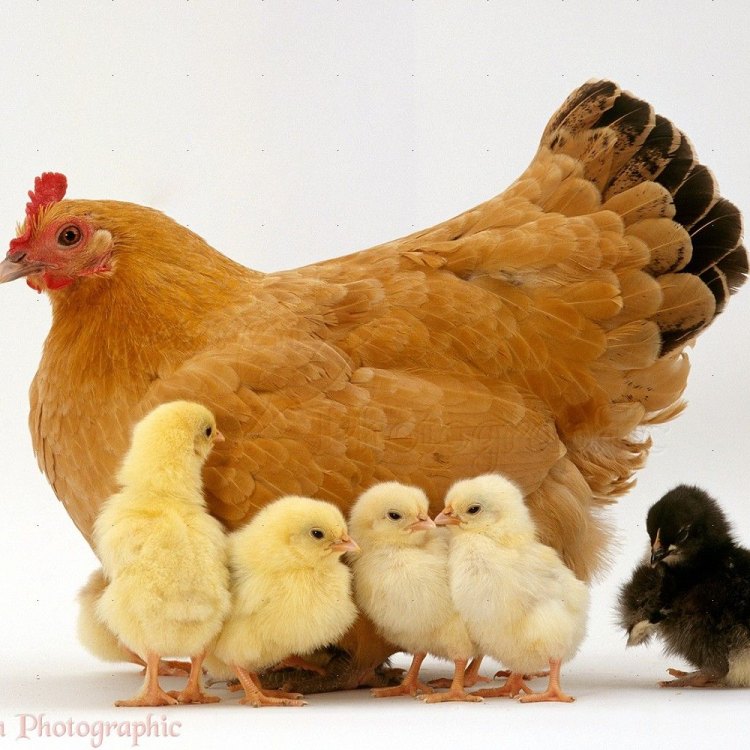
Chicken
- Adult Size: Medium-sized
- Average Lifespan: 5-10 years
- Reproduction: Sexual
- Reproductive Behavior: Egg-laying
- Sound or Call: Cock-a-doodle-doo
- Migration Pattern: Non-migratory
- Social Groups: Flock
- Behavior: Social and curious
- Threats: Predation, diseases, and habitat loss
- Conservation Status: Domesticated
- Impact on Ecosystem: Significant role in agriculture
- Human Use: Meat and egg production, pet
- Distinctive Features: Comb and wattles on the head, feathers on legs and feet
- Interesting Facts: Chickens are descendants of the red junglefowl, they have a strong flocking instinct, and they can see in color.
- Predator: Various predators including foxes, dogs, and birds of prey
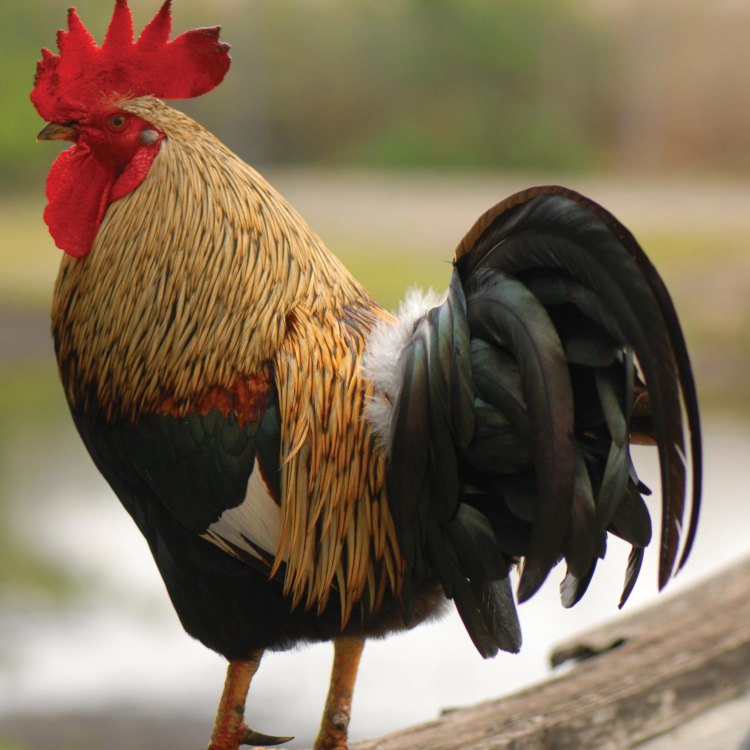
Gallus gallus domesticus
The Fascinating World of Chickens
When we think of farm animals, chickens are often the first ones to come to mind. These feathered creatures have been a part of our lives for centuries now, domesticated for their meat and eggs. But there is more to chickens than just being a source of food. These birds have a unique place in the animal kingdom, with fascinating traits and behaviors that make them stand out PeaceOfAnimals.Com. So let's dive into the world of chickens and discover what makes them so special.The Basics: Adult Size and Average Lifespan
Chickens may seem small and delicate, but they are actually medium-sized birds. On average, they can weigh between 5-10 pounds and stand around two feet tall. However, some breeds can grow larger or smaller than this range.When it comes to their lifespan, chickens have an average life expectancy of 5-10 years, with some breeds living up to 15 years. However, the lifespan of a chicken can vary depending on factors such as breed, diet, and living conditions.
Reproduction and Egg-laying Behavior
One of the most unique features of chickens is their method of reproduction. Unlike some animals that reproduce asexually, chickens reproduce sexually. This means that a male and female chicken must mate for the female to lay fertilized eggs Cardinal.The reproductive behavior of chickens is also fascinating. Hens, which are the female chickens, have a natural instinct to lay eggs and take care of their young. They can lay an egg every day or every other day, depending on their breed and age.
Cock-a-doodle-doo: The Iconic Sound of Chickens
If you've ever been around chickens, you know that they are not the quietest of animals. They are known for their iconic call, the "cock-a-doodle-doo." This loud and distinctive sound is mostly made by roosters, which are male chickens.Aside from the "cock-a-doodle-doo," chickens also have various vocalizations that they use to communicate with each other. These can range from clucking, squawking, and chirping, depending on the situation.
Non-migratory Migration Pattern
Unlike many other bird species, chickens do not have a migratory pattern. This means that they do not fly long distances to seek out better living conditions or food sources. Chickens are non-migratory and tend to stay in one place as long as their basic needs are met.Social Groups and Behavior
Chickens are social animals and are often found in flocks. These flocks can consist of anywhere from a few birds to hundreds of them. Within a flock, chickens have a hierarchy, with dominant birds at the top and subordinate birds at the bottom.Their social behavior is also quite curious. Chickens are known to be intelligent animals, and they have a strong flocking instinct. They will often follow a leader and work together to find food and avoid predators.
Threats to Chickens and Their Conservation Status
Unfortunately, chickens face many threats in their natural environment, as well as in domestication. Predators such as foxes, dogs, and birds of prey pose a danger to them, especially if they are not protected. Diseases can also affect chickens, leading to a decline in their population.In the wild, some chicken breeds are considered endangered or vulnerable due to habitat loss and human disturbance. However, overall, chickens are not a threatened species. In fact, they are classified as domesticated animals, with millions of them being raised for food and other human uses.
The Role of Chickens in the Ecosystem
Chickens may seem like simple creatures, but they play a significant role in the ecosystem, particularly in the agricultural sector. These birds are omnivores, meaning they eat both plants and animals. This makes them important in controlling pest populations in fields and gardens.Moreover, chickens also have a significant impact on the health of soil. Their scratching and pecking behavior helps aerate and turn the soil, promoting better plant growth. Their droppings also serve as a natural fertilizer, enriching the soil with essential nutrients.
Human Use: More Than Just Meat and Eggs
Humans have been using chickens since ancient times, domesticating them for various purposes. Their meat and eggs are the primary sources of food for many people around the world. But there is more to chickens than just their meat and eggs.Chickens are also kept as pets, and they can make wonderful companions. With proper care and attention, chickens can be social and friendly towards their human owners. They are also relatively low-maintenance pets, making them a popular choice for many households.
Distinctive Features
One of the most recognizable features of chickens is their distinctive head adornments. They have a comb and wattles on their heads, which are red, fleshy growths. The comb is the one on top of the head, while the wattles are the ones that hang under the chin.Chickens also have feathers on their legs and feet, which is quite unusual for birds. This adaptation helps them with their movement, providing them with traction and protection against the elements.
Interesting Facts About Chickens
Chickens have been domesticated for thousands of years, and this has resulted in many interesting facts and quirks about them. For instance, did you know that chickens are descendants of the red junglefowl? These wild birds have been domesticated into the many chicken breeds we know today.Another interesting fact about chickens is that they can see in color. While many birds have a limited color range, chickens have the ability to see red, green, and blue colors. This is partly due to their ancestor, the red junglefowl, who also had good color vision.
Predators of Chickens
Like any other animal, chickens are not immune to predators. In their natural environment, they face threats from various animals such as foxes, dogs, and birds of prey like hawks and eagles. In captivity, predators such as rats and snakes can also pose a danger to chickens.In Conclusion
Chickens may be common farm animals, but they have a unique place in our world. From their reproductive behavior to their distinctive features, these birds never fail to fascinate us. They play a significant role in agriculture, and their presence in our lives goes beyond just being a source of food. So the next time you see a chicken, take a moment to appreciate their interesting traits and the role they play in our ecosystem.
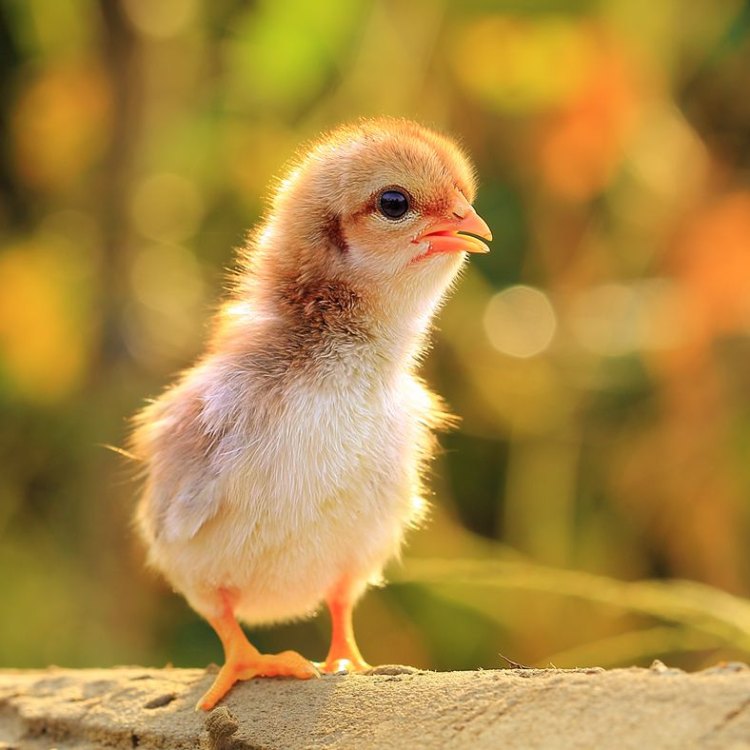
The Fascinating World of Chickens: An Ode to the Humble Bird
Disclaimer: The content provided is for informational purposes only. We cannot guarantee the accuracy of the information on this page 100%. All information provided here may change without prior notice.

